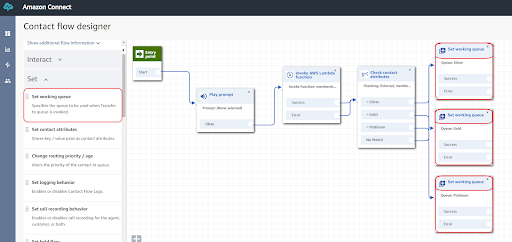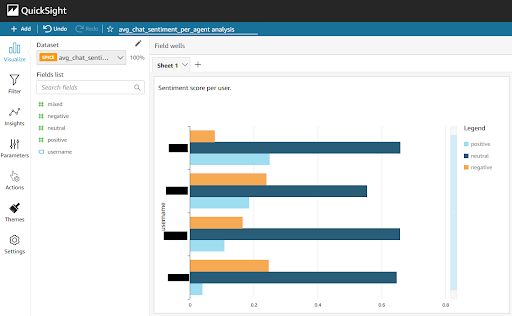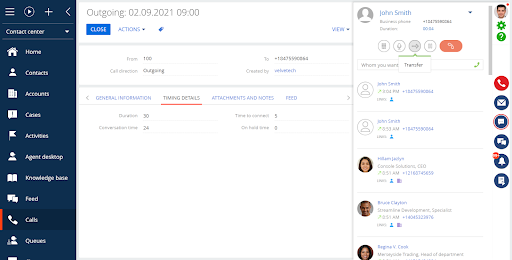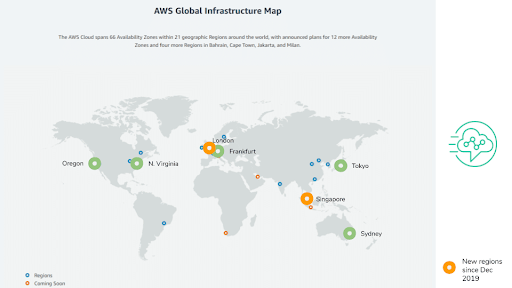Global Voice for Amazon Connect: What Are Your Options?

As modern businesses fight to keep up with customer demand and stand out against competitors with excellent customer service, the importance of cloud-based contact centers has never been so understated.
While we know that customer satisfaction equates to higher cross-sell rates and low customer churn, the challenge of catering to expectations is tougher than ever.
Acknowledging this demand, Amazon has delved into the world of contact center as a service (CCaaS) with its own solution, Amazon Connect.
In response to growing demand for flexible, scalable customer service solutions, Amazon has been building advanced feature sets within its Amazon Web Services (AWS) core and collecting household names like Capital One and The University of Texas along the way.
What is Amazon Connect?
Amazon Connect is a virtual contact center built within AWS. It’s a fully-fledged CCaaS offering that is scalable to 100,000s of agent seats and customizable based on each business’ custom needs.
It’s built on the backbone of what Amazon used to serve its own millions of customers for years, totalling a number of interactions into the billions.
Amazon Connect is a fully omnichannel contact center, supporting channels like:
-
- Voice
- SMS
- Web chat
- In-app chat
- Chatbots
- Outbound campaigns
- Social media (Twitter, Facebook Messenger, WhatsApp, WeChat)

Amazon Connect features
There are several reasons why you would want to port your business phone numbers. Let’s take a closer look:
Consumption model and workflow builder
Amazon Connect allows you to create your own CCaaS license so you only use what you need. For example, if you only need voice, web chat, and SMS, there’s no obligation to consume a license that includes social media and email too.
You create your own environment using a drag and drop workflow builder. This could be for setting up call queues with skills-based routing, all the way through to proactive chatbot responses for different scenarios.

Artificial intelligence and machine learning
One of the stand out features of Amazon Connect is the intelligence applied to each transaction, using AWS’ natural language understanding systems.
Let’s say your customers call into your IVR. Rather than simply inputting their chosen options (1, for sales, 2 for support), they can say their reason for calling and your IVR can start to troubleshoot without the need for human input.
This also takes away the long wait for an agent.
So, when Dave, a long-term customer who has an urgent issue that’s costing his company hundreds of dollars per minute, your IVR understands the urgency and potential implications Dave is experiencing. It works through what the problem could be and offers support based on previous interactions and machine learning.
The result? Priority over other less urgent interactions and a genuine conversation between your AI-powered IVR and Dave. It’s not like talking to a bot from 1994, where Dave ends up frustrated and ends up queuing for 30 minutes because he pressed the wrong option in your pre-configured sequence.

This technology gets applied to voice calls and web chats too. Artificial intelligence (AI) and machine learning is at the heart of Amazon Connect. So there’s no need to manually audit every interaction or select random calls for quality assurance.
AWS is working to highlight great calls for training new agents and bring to light poor calls (in real time) to escalate where necessary.
Stock contact center features
In addition to advanced features like AI, you also get everything we’ve come to expect from a CCaaS solution:
- Call queuing
- Skills-based routing
- In-app, web, and video calling
- Call and screen recording
- Proactive outbound campaigns
- Task and ticket management
- Contact forecasting
- Capacity planning
- Real-time conversational analytics
- Historical data reporting
- Line of business system integrations (Salesforce, Zoho, Zendesk, etc.)

Amazon's vision for the future of customer service technology
Amazon has been pushing pay-as-you-go pricing for its contact center since the start. The goal being to save a considerable amount versus a traditional per user per month license model while still receiving enterprise-grade technology.
With a modern approach to cost models comes a modern approach to implementation and onboarding. Amazon suggests that it can take merely minutes to get a new agent set up and ready to go.
On top of being cost effective and easy to set up, Amazon wants to bring the latest and greatest features to the table as and when you need them. Once blue-sky requirements, like generative AI assistants and predictive routing, are no longer deemed the art of the possible but simply a new feature you can turn on.
Amazon Connect voice service options
A major consideration when rolling out Amazon Connect as your contact center is your voice connectivity. While we have channels like chat and SMS easing the burden on call center agents, voice remains the most popular channel with customers.
In fact, 53% of customers still use voice as their primary channel for inbound queries.
Here are your options for voice connectivity in Amazon Connect.
1. Amazon Connect direct
The Amazon Connect telephony option is when AWS manages the telephony infrastructure for you. This includes all carrier connections, redundancy, and routing. You get both toll-free and DID numbers in the supported regions.
With this voice option, Amazon is your sole provider for your voice and contact center infrastructure. The benefits of Amazon Connect are significant:
- Single bill for voice and contact center
- Global, trusted brand
- Benefit from bundled pricing
- Unified SLA for voice and contact center
Amazon Connect voice covers the following regions:
- US
- Asia-Pacific
- Europe
- Africa
There is extensive coverage through North America and Europe, with some coverage in major countries in Asia-Pacific and Africa.
It offers various number types like toll-free and local DIDs, but these vary significantly by country. Here, it's important to cross reference your requirements against Amazon's number coverage to determine where there might be gaps.
For example, in Anguilla, you can get number coverage (utilizing the North America points of presence) but only local numbers rather than toll-free as well. Whereas setting up a new office in the USA means you have total coverage inbound and outbound calls and the full spectrum of number options available.

Assuming you’re a sensible distance from one of these data centers, you can likely get coverage for Amazon for both voice connectivity and contact center software. For example, if you operate in Poland, there is no Polish data center, but you could use the Frankfurt data center as your host source.
While the Amazon Connect telephony coverage is somewhat global, there are exceptions within each region – most notably in Asia, South America, Middle East and Africa. A full list of features available by country is available here.
Ultimately, if you’re looking for Amazon Connect voice, companies operating primarily in North America and Europe may be able to source exclusively with Amazon, whereas broader multinationals will need to explore other options or use Amazon with another voice provider.
2. SIP trunking partners (BYOC model)
When Amazon can’t provide voice connectivity in your region, or if you wish to create a layer of redundancy, opt for a verified SIP trunking partner.
In this model, you can leverage a bring your own carrier (BYOC) model where Amazon still provides the cloud infrastructure for your CCaaS but you choose a third party to deliver the voice service.
The is a small number of partners who can provide local telephony for Amazon Connect. For example, Embratel specializes in providing breakout in Brazil. Meanwhile, AVOXI can provide DID and toll-free services in 60+ countries that are not served by Amazon Connect international calling, such as:
- Brazil
- Egypt
- Indonesia
- India
- Israel
- Malaysia
- Philippines
- Saudi Arabia
- Taiwan
- United Arab Emirates
- Vietnam
Wherever you need to reach your customers, we’re confident you’ll be able to find a voice partner outside of Amazon’s own supported regions.
Have ultra-specific requirements? Please book a call to discuss our roadmap for Amazon Connect telephony.
3. Call Forwarding
The third, but non-desirable, option is to set up diversions from your existing phone system into Amazon Connect.
The only real pro to this approach is that this requires minimal setup. You’re using existing technology so the only changes you need to make are configuring the call forwarding from one number to another (your incoming numbers to your contact center).

Those pros, however, are heavily outweighed by significant cons:
- Not a stable direct SIP connection
- Expensive as you incur an incremental cost per call
- Makes call routing setup and changes complex
Call forwarding is only recommended as a temporary solution. For example, if you’re moving premises or have already rolled out your Amazon Connect system and can’t wait to get started receiving incoming calls.
While totally viable as a stopgap solution, call forwarding should not be used on a permanent basis.
Contact routing and management
Inbound call routing
Once you have your Amazon Connect telephony provider selected, the next phase is to configure your call flows. Here, you have choices between skills-based routing, location-based routing, and anything custom you wish to create.
You may choose to include an auto attendant, which will need its own number attached, or an interactive voice response (IVR) system. Once callers have selected their desired option on your menu, you can use an automatic call distributor (ACD) to find the next available agent best suited to that all.
If you have toll-free number hosted outside your PBX, opt for call forwarding until the time you can port these into the same environment.
You can apply call queue treatment while customers are holding for an agent. Choose from comfort messages, music on hold, or announcing their position in the queue.
Or, much loved by customers, put automated callbacks in place so customers no longer have to wait in the queue. This feature holds a caller’s place in the queue for them and triggers an outbound call when the agent they’re waiting for becomes available.
AVOXI for Amazon Connect
If you’re looking for high-quality, cost-effective voice connectivity for Amazon Connect deployment, look no further than AVOXI.
We support a direct SIP connection between AWS and your local PSTN region in 60+ countries, with a deep inventory of local, toll-free numbers, and two-way calling with guaranteed caller ID.
Country coverage supplements Amazon Connect’s gaps with a focus on regions that include Asia, South America, Middle East, and Africa.
We can provide two-way caller ID in over 100 countries, although not all of those countries can currently leverage direct Amazon Connect SIP interoperability.
AVOXI SIP trunking for AWS is:
- A direct SIP interconnect for greater stability and lower cost
- Rigorously tested by Amazon to ensure high performance
- Continuously expanding coverage around the world
You’ll be in the company of brands like Hilton and TUI that use both AVOXI and Amazon Connect to connect with customers around the world.
So, if you need to consolidate your platform providers, are expanding into new territories, or need a scalable, global platform to provide your Amazon Connect voice connectivity, you’ll be in great hands.
Ready to set up your voice connectivity? Check out AVOXI for Amazon Connect.

